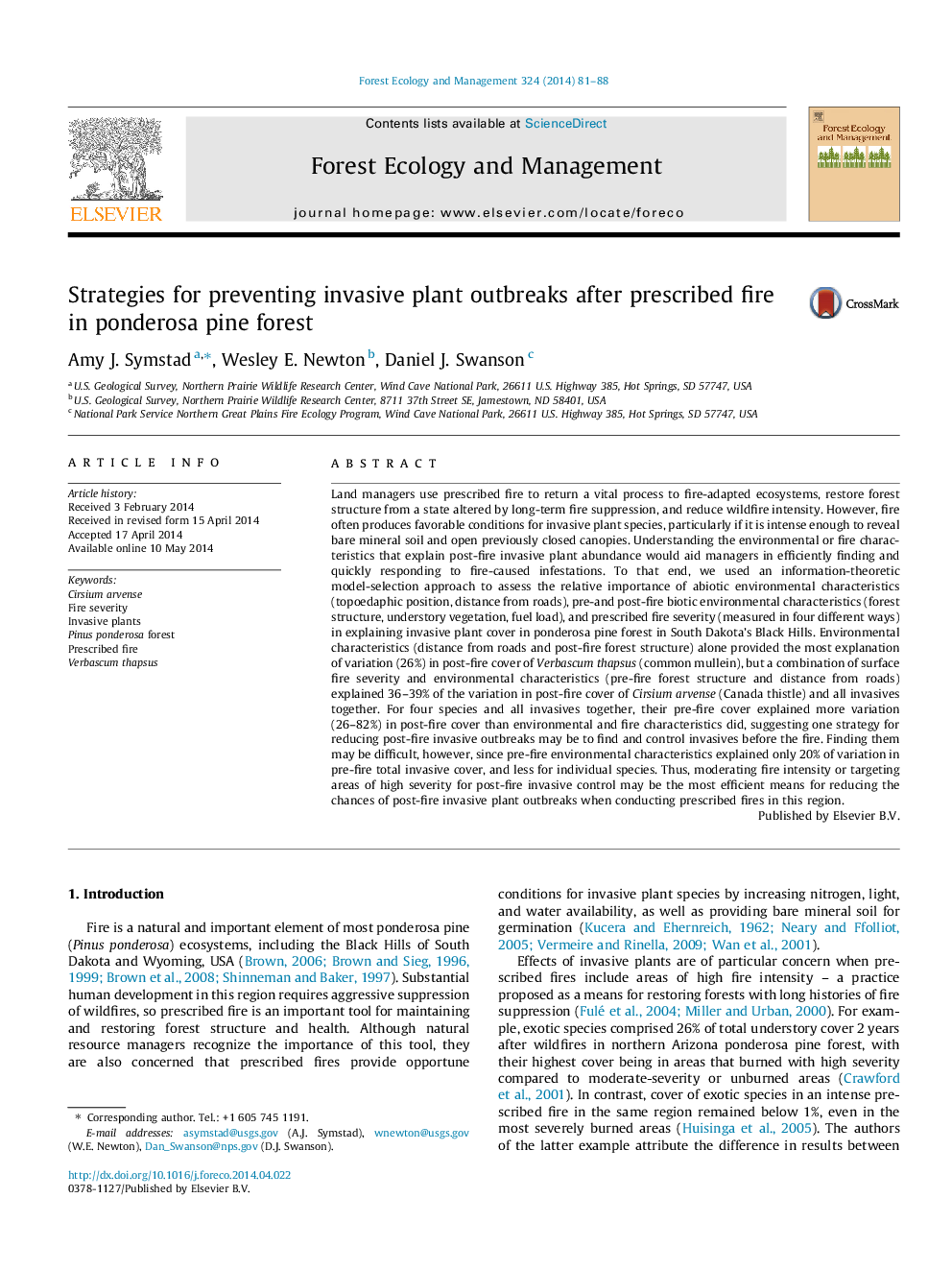| Article ID | Journal | Published Year | Pages | File Type |
|---|---|---|---|---|
| 86627 | Forest Ecology and Management | 2014 | 8 Pages |
•Post-fire cover of four invasive plants was best explained by their pre-fire cover.•Environmental factors explained only 20% of variation in pre-fire invasive cover.•Post-fire Canada thistle abundance increased with fire severity.•Moderating fire intensity may reduce post-fire invasive plant outbreaks.
Land managers use prescribed fire to return a vital process to fire-adapted ecosystems, restore forest structure from a state altered by long-term fire suppression, and reduce wildfire intensity. However, fire often produces favorable conditions for invasive plant species, particularly if it is intense enough to reveal bare mineral soil and open previously closed canopies. Understanding the environmental or fire characteristics that explain post-fire invasive plant abundance would aid managers in efficiently finding and quickly responding to fire-caused infestations. To that end, we used an information-theoretic model-selection approach to assess the relative importance of abiotic environmental characteristics (topoedaphic position, distance from roads), pre-and post-fire biotic environmental characteristics (forest structure, understory vegetation, fuel load), and prescribed fire severity (measured in four different ways) in explaining invasive plant cover in ponderosa pine forest in South Dakota’s Black Hills. Environmental characteristics (distance from roads and post-fire forest structure) alone provided the most explanation of variation (26%) in post-fire cover of Verbascum thapsus (common mullein), but a combination of surface fire severity and environmental characteristics (pre-fire forest structure and distance from roads) explained 36–39% of the variation in post-fire cover of Cirsium arvense (Canada thistle) and all invasives together. For four species and all invasives together, their pre-fire cover explained more variation (26–82%) in post-fire cover than environmental and fire characteristics did, suggesting one strategy for reducing post-fire invasive outbreaks may be to find and control invasives before the fire. Finding them may be difficult, however, since pre-fire environmental characteristics explained only 20% of variation in pre-fire total invasive cover, and less for individual species. Thus, moderating fire intensity or targeting areas of high severity for post-fire invasive control may be the most efficient means for reducing the chances of post-fire invasive plant outbreaks when conducting prescribed fires in this region.
